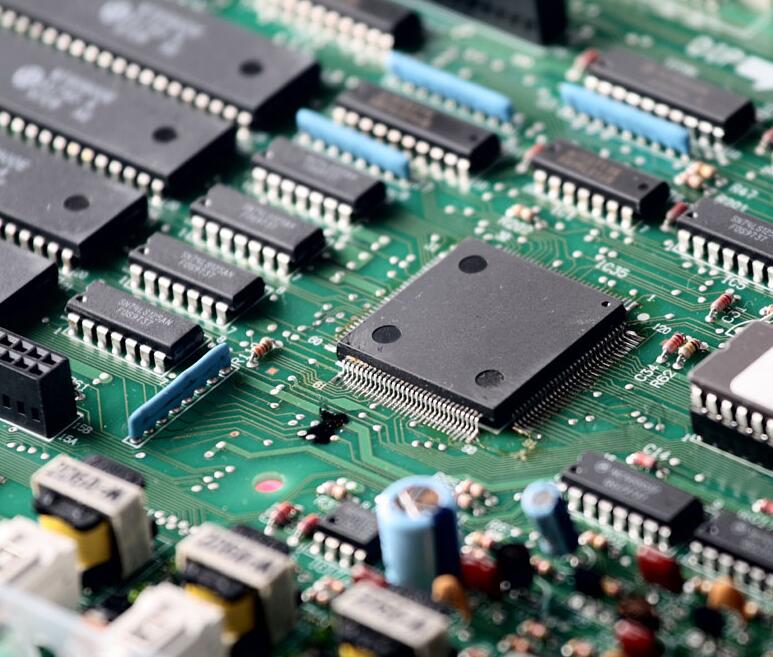The basic structure of SMT reflow welding
PCB is very happy to be your business partner. Our business goal is to become the world's most professional prototype PCB manufacturer. With more than ten years of experience in this field, we are committed to meeting the needs of customers from different industries in terms of quality, delivery, cost-effectiveness and any other demanding requirements.
1. Basic structure of reflow soldering furnace
A typical infrared hot air reflow welding structure is shown in the figure, usually composed of more than five temperature zones, each temperature zone is equipped with planar far-infrared heating and hot air heaters, the temperature rise range of the first and second temperature zones is At room temperature to 150 degrees Celsius, the heating of the third and fourth temperature zones plays a role in heat preservation, mainly to heat the SMA to ensure that the SMA enters the welding temperature zone in a sufficiently good state, and the fifth temperature is for welding. Temperature zone. After the SMA is out of the furnace, it is cooled at room temperature.
2. Heater system
There are many types of heaters, which can be roughly divided into two categories. One is infrared lamps and quartz tube heaters, which can radiate heat directly, called sequential radiators; the other is alloy aluminum plate and stainless steel plate type. Heater, the heater is cast in the plate, and the heat is first transferred to the plate surface through heat conduction. Tubular heaters have the advantages of high operating temperature, short radiation wavelength, and fast thermal response. However, due to light generation during heating, different reflection effects are required for welding components of different colors, and it is also not conducive to matching with forced hot air. The plate heater has a slow thermal response and a slightly lower efficiency, but due to the large thermal inertia, the perforation is beneficial to the heating of the heat seal, and it is less sensitive to the color of the welded components, and the shadow effect is small. In addition, the structural integrity is strong. It is also conducive to loading, unloading and maintenance, and it has obvious advantages over the former in terms of matching with thermocouples. Therefore, in the current sales of in-flow welding, the heaters are almost all stainless steel heaters, and some manufacturers apply infrared coatings on their surfaces to increase infrared emission capabilities.
The power of the plate heater, for reflow soldering that can weld a PCB with a width of 400mm, the power of each heater is 3~4kW, the power of the whole machine is 30~40kW, and the maintenance power after startup is about 20kW.

Wind speed and air volume control
Realizing the control of wind speed and air volume is very important for the stable control of furnace temperature. The reflow soldering furnace of BTU company in the United States can also realize air pressure control.
Delivery system
The conveyor system of today's reflow soldering furnaces generally adopts chain transmission. The width of the conveyor chain can be adjusted by machine or ESC. The PCB is placed on the chain track, which can be connected to the production and can facilitate the double-sided welding of SMA. During reflow welding, the running stability of the chain guide should be observed to avoid disturbing the solder joints. Some rail materials do not have aging and temperature resistance treatment, and deform after working for a period of time. Whether the chain rail itself has a heating system is also a problem that cannot be ignored, because the rail also participates in heat dissipation and will directly affect the temperature on the edge of the PCB. In addition, consideration should be given to the heat resistance of the material of the guide rail itself, otherwise long-term operation at high temperatures will cause rust and deformation. The parallelism of the chain guide is also a problem that cannot be ignored. Poor accuracy sometimes causes the PCBA to fall off in the furnace cavity.
Temperature Control System
The temperature control system with furnace temperature test function can achieve high temperature control accuracy whether it is controlled by a temperature meter or a computer. The temperature control accuracy of lead-free reflow soldering furnace can generally reach ±1 degree Celsius .
Infrared reflow soldering with the above basic functions can meet the needs of high-precision SMA products and lead-free soldering.